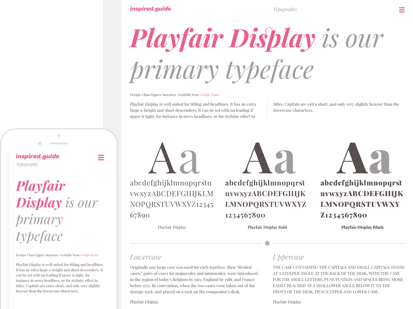

Whether your company is just starting out, going through a rebrand, or catching up to the times, a style guide may be what you need to help define and grow your brand.
Style guides are rulebooks that are meant to be distributed to your staff and clientele. Time is of the essence in every work environment, and a style guide will save time with your designers, your creative team, and your clients. It will also force you to define your brand, to ask the essential question: "What is my brand all about?"
See What's Working and What's Not

Look at what top brands like Amazon and Apple are doing with their style guides. These companies put their guides out in the open for a reason, and you might as well take advantage of it. Look at how flexible (or inflexible) their logos are. Look at how many fonts they are using, and what types of fonts. How many words are they using to define their brand? In what way? Pick and choose elements from each style guide that your company will need to implement. If you work at a small trinket shop in a downtown shopping district, maybe you don't need a 50 page document defining how to use an appropriate grid layout for your website, but you may need to decide what color palette you can use for your store signage.
Your Logo Is the Star of the Show

Logos are the biggest aspect of visual branding, and they should take a prominent place in your style guide. Whether you have one or multiple variations of a logo, make sure to define exactly how it should be used. For example, describe what types of backgrounds should and should not be displayed with the logo. Are patterned backgrounds acceptable? Do only certain pictures or patterns really make your logo shine in a design? Whatever your guidelines, it's important to illustrate correct and incorrect ways to showcase your logo. Be sure to state clearly and concisely that your logo should not be altered in any way. This may limit your creative team, but outlining your rules from the outset can prevent people from "Frankensteining" your logo.
Don't Forget Your Fonts

It's good to have a variety of fonts, but make sure that your fonts are carefully chosen and clearly defined. It's easy to slip into using different fonts for ads or other standalone items connected with your brand. When creating your style guide, make sure to choose fonts that are versatile and functional enough to serve all of your various needs (so you don't end up having a one-night rendezvous with Comic Sans).
Since most fonts are not available on every computer, it is important to provide your designer or client with a download link in your style guide. Definitely do so if your font is custom to your brand. Never provide a font that you don't have the rights to.
Refine Your Voice
Written content is an essential part of selling any brand. It establishes your company’s voice—the voice the public hears when visiting your website or reading your ads. This voice should sound like a well informed friend (and not a pompous know-it-all trying to sell your audience something they don't need). Because not all of your company’s content will be written by one person, content rules are essential in your style guide. Make sure your brand’s voice is friendly and consistent across materials. Here are some examples of great content writing.
Defend Your Decisions

Creatives may treat your style guide with a suspicion that the document will limit their creativity (and it honestly might). However, providing brief explanations of your branding decisions can help get them on board. You don't have to get too detailed; intricate data, graphs, and a 50-page research paper on why Helvetica is the only font for your brand would be intimidating and not particularly helpful in communicating your point of view. Short, concise paragraphs that explain style decisions will create authority and help designers and writers understand your perspective.
Share It Internally
After you've created a style guide, you need to consider how to distribute it. Don't immediately post it on your website. First, have a meeting to discuss the rules you've established, and set a plan in motion to implement those rules in your company's everyday routine. Send it to anyone who might be representing your brand, whether they are producing creative content, developing your website, or sending emails to customers. Make sure to check all the boxes with your internal communications before putting your guide out into the world. Once you’re sure you have a solid guide in place, you can decide whether to put it on your website for the public or keep it internal.
Don't Abandon—Update!
Styles are always changing, and this year’s popular font will probably seem like Times New Roman by year five. Have a meeting to update your brand at least once a year. This can be a simple photo update on your website or something more dramatic like a logo redesign. Never abandon branding completely — this would confuse your consumers if you do it too often. Make your branding flexible from the beginning, and allow for updates whenever needed.
Style guides can be as long or as short as they need to be. They can have their own website navigation and 1,024-megabyte PDF download, or they can be a single sheet of paper pinned to your company's news board. Either way, style guides are useful for defining rules to make your brand recognizable and helping to answer the question, "What is my brand all about?"
If you have questions or need help with designing and developing your brand, contact Blue Frog. We’re a full-service marketing agency with offices in Denver, Des Moines, and Huron. Schedule a consultation today!

